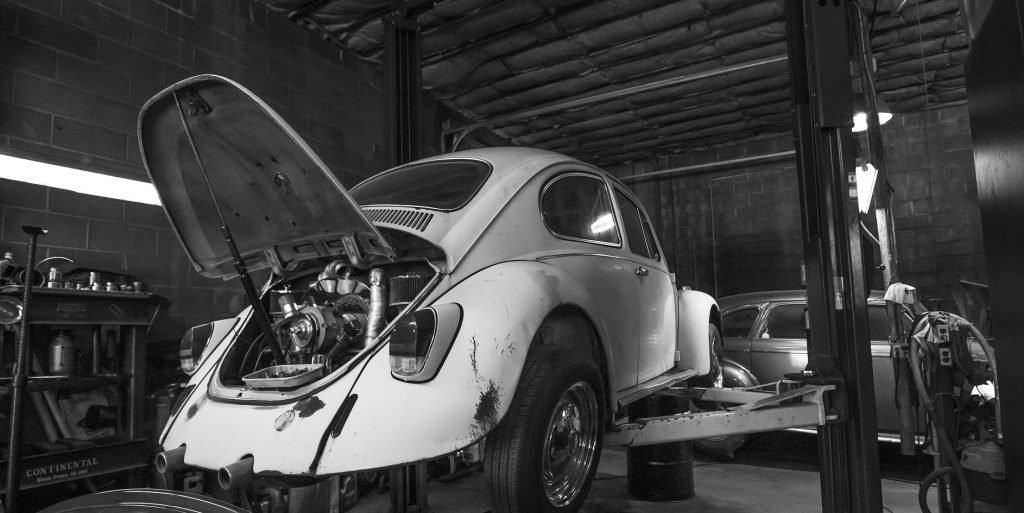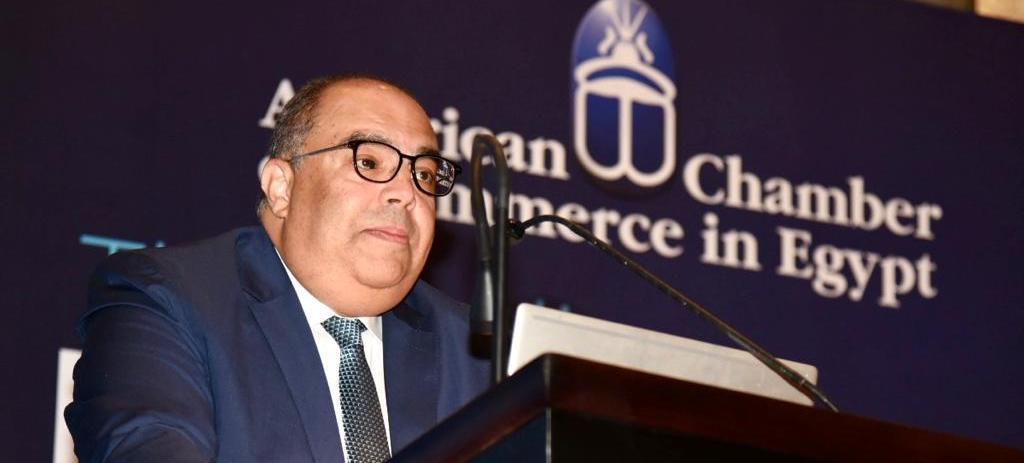Having produced cars locally for over 60 years, Egypt is a pioneer in Africa. It started with an ambitious vision to have a 100% Egyptian car brand: the Ramses. Its production run lasted from 1960 until its demise in 1972. The focus then shifted to building cars with a local brand name (Nasr, Dogan, and Polonez) that are licensed and fully supported by FIAT and, later, its offshoots. Those cars died off in the 1990s and early 2000s.
Egypt has factories assembling vehicles for 17 international carmakers under their brand names. Nearly 23,754 units were built by the end of 2021, according to CEIC Data, a data aggregator. Egypt is the third largest producer of cars in Africa after Morocco and South Africa.
However, the country’s auto assembly industry has been in decline, producing 116,683 vehicles in 2010, according to CEIC Data. On the flip side, auto manufacturing in Morocco went from 42,066 units annually in 2010 to 403,007 by the end of 2021. Meanwhile, South Africa recovered from a 29.2% decline in output in 2020, to turn out nearly half a million cars in 2021. Egypt’s annual production amounts to less than 6% of Morocco’s and 4.7% of South Africa’s.
The government’s plan includes making electric vehicles (EVs) with a local brand name, boosting the number of domestic-made components in all cars and attracting more automakers. To achieve those plans, the state in the second half of 2022 announced its National Strategy for Localizing the Automotive Industry (NSLAI), founded the Supreme Council for Automotive Manufacturing and created a fund to finance eco-friendly cars.
The Egyptian government could take lessons from Morocco and South Africa to attract more automotive FDI. Meanwhile, Tunisia, South Africa, Morocco, Uganda, Nigeria, and Ghana already have road-going, homegrown passenger cars, something Egypt wants but doesn’t yet have.

Risk, opportunity
Prehisha Martin of Baker McKenzie’s South Africa office wrote in a March blog on Global Compliance News that Africa’s manufacturing, in general, accounts for 10% of the continent’s GDP. Automotive investments accounted for a fraction of that contribution. Mordor Intelligence, an African think tank, estimated that in 2021 the African automotive market size was $30.4 billion, while the continent’s GDP stood at nearly $3 trillion.
That small contribution is down to unfavorable investment and business environments. The Autos Production Risk/Reward Index (RRI) published by Fitch Solutions, one of the three top credit rating agencies, ranked the continent as the “least attractive region globally.” It scored 38.4 points out of a possible 100, with the global average at 50 points. The continent’s “risk” score is 28.8, while “rewards” is 47.7. RRI’s analysis report said those scores “highlight the limited rewards and extensive risks present in the region” that would deter investment in auto manufacturing and feeder industries.
Nevertheless, Africa’s underserved young population could create long-term opportunities for carmakers. The Paris-based International Organization of Motor Vehicle Manufacturers (OICA) found that Africa has 17% of the world’s population and 1% of car sales. McKinsey & Company estimates 44 units per 1,000 people in Africa compared to the worldwide average of 180 per 1,000.
That could mean sustainable long-term opportunities to increase sales. The Fitch RRI Index’s “vehicle production growth” indicator was 80.4 points, meaning “favorable prospects for growth going forward.”
Jo Harper of German news agency Deutsche Welle also noted the critical role of low labor costs across the continent and “supportive policies by governments” in increasing long-term auto investments in Africa.
Those factors helped attract international carmakers to African countries offering the most attractive investment and business environments. The list includes VW (Volkswagen), Daimler (Mercedes-Benz) and BMW. Collectively, they make up most of the locally assembled car sales across the continent, said Harper.
Those carmakers aren’t targeting just local markets. In 2021, South Africa exported 298,020 units to 106 nations, according to South Africa’s automotive business council (NAAMSA). Meanwhile, Morocco sold 358,745 cars (nearly 80% of local production) abroad last year, Reuters reported in March, with two-thirds going to France, Italy, Spain and Germany. Egypt exported 517 cars in 2021 to 22 countries, according to CAPMAS.
South Africa
The automotive sector in South Africa accounted for 6.8% of GDP and 14.3% of exports in 2021. The International Organization of Motor Vehicle Manufacturers said the country ranked 21st in the world.
South Africa produces finished cars to meet local demand and export to developing nations, particularly in Sub-Saharan Africa. Meanwhile, 70% of locally manufactured parts, including seats, engines, tires and spare parts, go to factories and dealerships in the EU.
Government data shows 55 car brands, 26 light pickup truck (bakkies) brands and 200 automotive component manufacturers operating in South Africa. There also are 150 other companies serving the automotive sector. The list includes specialized parts makers such as Corning, Bloxwich, Arvin Exhaust and Senior Flexonics. Others are carmakers who use South Africa as a manufacturing center to supply assembly facilities and target markets elsewhere. The list includes General Motors, BMW, VW, Toyota, Nissan, Fiat, Ford, and Daimler-Chrysler.
The sector is uncharacteristically resilient in South Africa. CEIC Data reported that in 2019, before the COVID-19 pandemic, South Africa produced 631,921 automobiles before slumping to 447,213 the following year. However, it still saw additional investments of ZAR 9.2 billion ($518.8 million).
In 2021, amid heightened concerns over COVID-19 and logistics bottlenecks, production recovered to nearly half-a-million units. That year also saw new auto investments in South Africa reach ZAR 8.8 billion ($494.6 million). Martin noted multinational carmakers were the most prominent investors.
Planet42, a South African provider of various modes of personal transport, said the country “boasts a competitive industrial base, good infrastructure, flexible production capacity, availability of raw material and production tests.” As an emerging market, it has the “advantage … in terms of low tool [and labor] costs,” said Planet42
The government played a significant role in preparing the country. The first step was in 1964 when it introduced the Automotive Production and Development Programme (APDP) — the equivalent of Egypt’s automotive strategy announced this year. Martin of Baker McKenzie South Africa said in his March blog on Global Compliance News that the “APDP is essentially South Africa’s long-term master plan to grow the automotive sector.” In 1995, the country introduced export incentives and nearly 20 years later, it announced the Black Industrialist Fund, which benefits automakers and other domestic manufacturers.
South Africa plans to expand its automotive manufacturing sector. In August, the government amended APDP, calling it APDP 2. It mainly gives customs and excise incentives to existing and new auto manufacturers. “In recent years,” said Martin, “the automotive industry [in South Africa] has been proactive in its approach to the new regulations, with substantial investments being made in the sector.”
The South African government announced its next step will be to promote “new energy vehicles” (NEVs), such as EVs, via an amended version of the APDP scheduled for 2026. “Other African countries — including Egypt, Morocco and Rwanda — have proactive policies … that support [EV] industries,” said Martin. “As part of a global industry, the domestic industry cannot afford delays.” Several media outlets reported the 2026 modifications will be designed to increase local vehicle production by 250% to nearly 1.4 million units annually by 2035.

Morocco
Morocco’s automotive sector is the biggest in the country. In its September issue, Manufacturing Global, a specialized publication, said the industry could account for a quarter of the country’s GDP by the end of this year. Karim Ahniche, the managing partner of AIMS International Morocco, also noted the auto industry is Morocco’s biggest employer with 158,000 jobs in 2018 and 62,000 indirect jobs at 220 suppliers.
According to government data, nearly all 403,007 locally built cars in 2021 came from Renault-Nissan Alliance and Stellantis Group, which own Peugeot, Citroen and Chrysler’s European operations (mainly FIAT). BYD was the third and latest automaker to enter Morocco in 2017. However, the Middle East Institute (MEI) reported in September 2021 their facility is not yet operational due to being “mired in delays and the outcome remains uncertain.”
Renault and Peugeot found Morocco to be ideal for their strategy in Europe. Joe Studwell of the Overseas Development Institute in Cambridge told DW, “Their plants … are there because they got super favorable deals — on land, infrastructure, customs facilitation to invest in a country that is a very short ferry ride from Europe.”
By law, all FDI entering Morocco is exempt from taxes for five years. Ahniche highlighted VAT exemptions, numerous initiatives, modern infrastructure and a skilled workforce as additional reasons why auto manufacturers go to Morocco.
Meanwhile, nearly 60% of components used in locally assembled cars come from domestic suppliers. According to Harper, those parts include seats and axles that local feeder companies produce to EU standards. He added the cost of labor is another significant factor, as it is a quarter of that in Spain and lower than in Eastern Europe, where many international carmakers have factories to supply the EU market.
The Moroccan government also has free trade agreements (FTAs) with the EU, Africa and the GCC. A quota caps its FTA with the United States. “These agreements contributed undoubtedly in a positive way toward the emergence of export activities in the country,” said Ahniche. As a result, nearly three-quarters of locally produced cars in Morocco go to Europe. That makes the country the biggest auto exporter in Africa, said Harper of DW, stressing that almost no other country could replicate Morocco’s experience without a significant shift in government strategy and targets. “This logic [where local production primarily targets foreign markets] does not work for [other markets in] Africa where it is all about the local markets.”
Producing EVs in Morocco is only a matter of time, noted MEI. Stellantis Group-owned Opel’s MoU with the Moroccan government requires the production of EVs. “Peugeot already manufactures its … 5-door hatchback Peugeot 208 … and could switch with relative ease to producing the all-electric e-208 model that uses the same chassis,” said MEI,
In June 2021, Renault signed a strategic cooperation agreement with a U.S. company based in Morocco, STMicroelectronics, to sell electric and hybrid vehicle semiconductors to the French carmaker. “STMicroelectronics’ Moroccan auto chip production could eventually supply the manufacturing of EV models in Renault’s Morocco plants,” noted MEI.
Meanwhile, Harper of DW reported South Korea-based Hyundai might invest in a production facility, having left Algeria in August 2021. The company’s official statement cited “negative assessments about the investment climate in Algeria,” mainly due to political uncertainty while stressing “Morocco provides a better investment opportunity.”
More competition
Egypt will not only have to contend with Morocco and South Africa, but an increasing number of African countries that want to become auto manufacturers.
In Kenya, Mobius Motors was established in 2010 to develop and build a 100% homegrown SUV. So far, three models have been produced: Mobius I, Mobius II, and Mobius III. The first model was mainly a specialized off-road “dune buggy.” The Mobius II, launched in 2014, was a basic SUV designed for daily commutes and family trips. An updated Mobius II launched in December 2017, featuring a bigger engine and options typically found in conventional family cars from Europe or Japan, including power steering and GPS navigation. The Mobius III, launched last year, looks similar to the Jeep Wrangler, making it more mainstream.
The country also assembles several international brands. The local Associated Vehicles Assemblers factories build medium and heavy commercial vehicles for Mitsubishi, Fuso, Scania, Toyota, Hino and Tata. According to their website, they produce “43% of all assembled vehicles in Kenya.”
Volkswagen (VW) opened its fifth African assembly plant in Ghana in August 2020. Other locations are in South Africa, Kenya, Nigeria and Rwanda. Overall car production in each (except South Africa) is about 5,000 units a year. Wards Auto, a specialized portal, said the German carmaker sees that while the “African automotive market is comparatively small today, the … region has the potential to become an automotive growth market.”
In 2019, VW launched a joint project in Rwanda to manufacture electric cars. The project is still in its pilot phase, using one charging station and four locally-made electric Volkswagen Golf hatchbacks (e-Golf). Thomas Schäfer, CEO of Volkswagen Group South Africa and responsible for the Sub-Sahara Africa Region, said in the 2019 press release, “Rwanda has the potential to leapfrog internal combustion engines into electric cars.”
Rwanda has a young and progressive population that appreciates individual and modern mobility. “With our development partner Siemens and support from the government of Rwanda, Volkswagen wants to make the e-Golf pilot project a blueprint for electric mobility in Africa,” said the release.
Similar activity is happening elsewhere in Africa, including Tunisia, which developed and builds Wallyscar, a homegrown everyday off-roading passenger car since 2016. The vehicle sells in small numbers in Qatar, France, Morocco, Panama, and Spain.
South Africa has two homegrown car brands (Birkin Cars and Perena Performance Group), producing sports cars suited for spirited driving on closed race circuits. Uganda’s Kiira Motors Corp. is marketing six models, all of which are EVs.
Innosan Vehicle Manufacturing Co., established in 2007 in Nigeria, builds passenger cars that can go off-road.
Lastly, Morocco has taken the ultra-exclusive high-performance route. Laraki Automobile is a high-performance carmaker founded in 2012. Its first car, the Fulgura, had a Mercedes-Benz engine that produced 920 horsepower (eight times the average power of a family car), costing over $555,000. The second model, the Borac, had the same engine, but was cheaper and less powerful. The third model, called Epitome, produces 1,200 horsepower and, when using 110-octane fuel, can make 1,750. It costs $2 million, with a limited production run of just nine units.
Some of those homegrown brands use state-of-the-art technologies that aren’t optimized for mass production. “We see new smaller carmakers in Africa do very specific smaller jobs, and this, combined with new technologies such as 3D printing, has potential for Africa,” Georg Leutert, director of the Automotive and Aerospace Industries at IndustriALL Global Union, told DW. “This is not dependent on economies of scale and could thus move away from mass production. But there is a problem [with] brand recognition and service infrastructure, plus the need for big upfront investment.”







